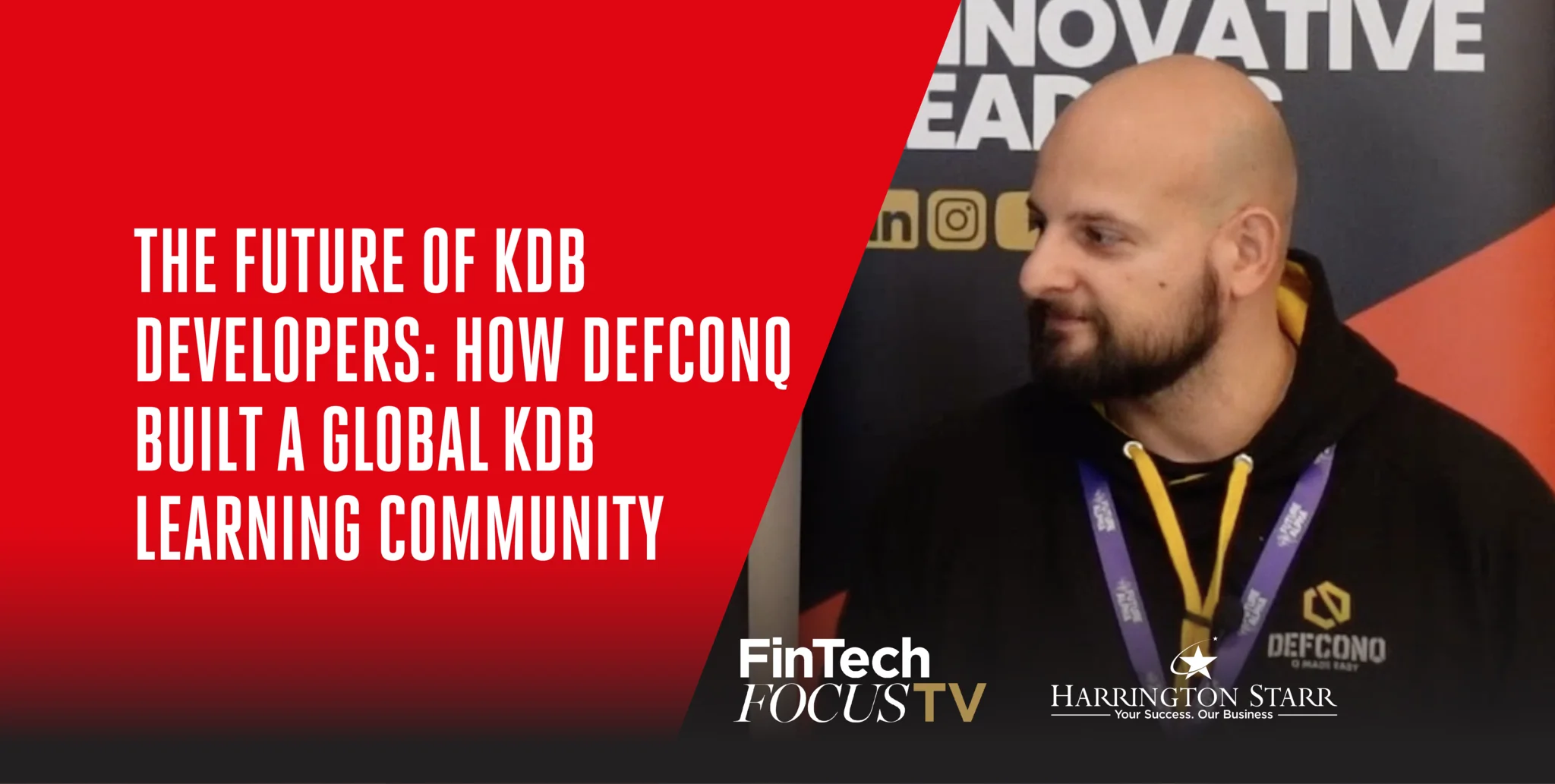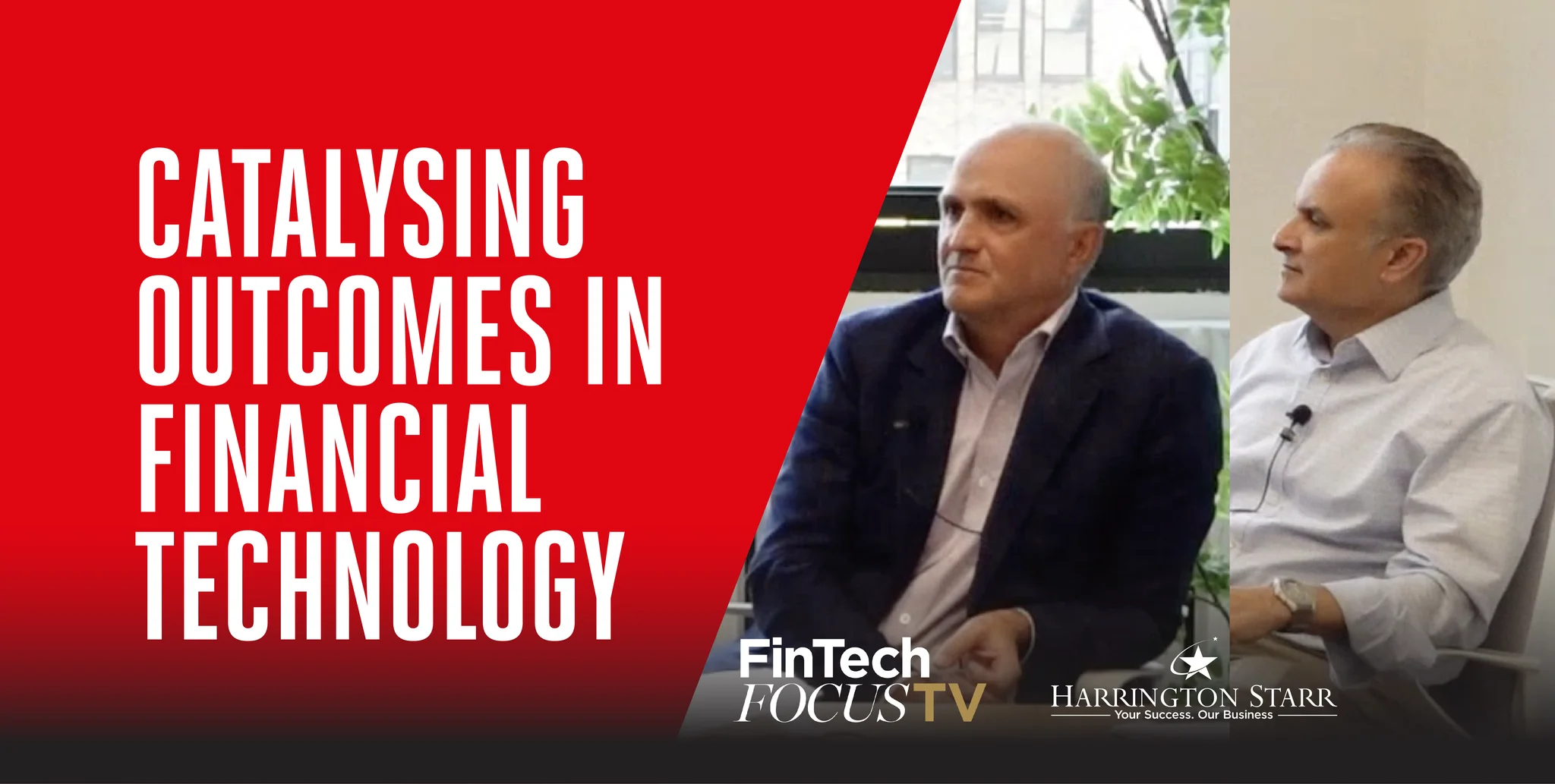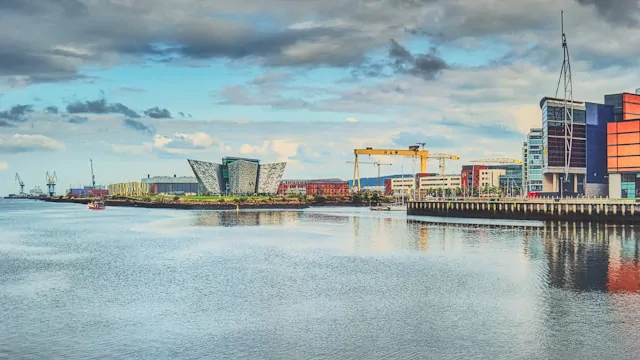Transforming Transformation
On this insightful episode of FinTech Focus TV, Toby Babb welcomes back Brian Harkin, Head of Technology & Innovation at Centrus, to discuss a topic of vital importance across the financial technology landscape: transformation. But not just any transformation, how to do it better, why so many attempts fail, and what it takes to ensure lasting, impactful change in FinTech. Brian returns to the show with the official release of his book, Galapagos, and a mission to fix what he describes as one of the most pressing global business problems: the failure of transformation programmes.
As a FinTech recruitment business, Harrington Starr is acutely aware of the importance of hiring leaders who not only understand technology but can also navigate complex change environments. This episode explores the intersection of leadership, culture, organisational agility, and transformation strategy, offering powerful lessons for both hiring and structuring success in modern FinTech businesses.
A Global Problem: Why Most Transformations Fail
Brian opens the conversation by sharing a sobering statistic: approximately $3.6 trillion is spent annually on transformation programmes globally, and of that, around $2.3 trillion is lost to failure. This represents a failure rate of over 70%, and while the number itself is staggering, Brian asserts it aligns with real-world experience.
These failures don’t just represent financial losses; they signify lost time, broken morale, and the missed opportunity to create real business impact. For financial services and FinTech organisations, where innovation and agility are paramount, this failure rate is unsustainable.
Brian’s answer to the problem is the Galapagos Framework, a methodology he developed after years of leading and observing transformation programmes that struggled. What makes Galapagos different is its core principle: placing the human being at the centre of change.
Introducing Galapagos: A Human-Centric Framework for Change
Toby and Brian reflect on their previous conversation, when Galapagos was still an advanced idea. Now, the concept has been fully realised in Brian’s book and is being adopted by organisations around the world. At its core, Galapagos is a human-centric framework for transformational change, designed to address the root causes of failure in major change programmes.
Too often, says Brian, organisations embark on transformation without considering the people delivering it. Whether it’s internal staff, external suppliers, third parties, or customers, human beings are the engine behind any change effort. Galapagos reframes transformation as something that must be built around those people.
The framework is divided into three core dimensions: the human dimension, the organisational dimension, and the delivery dimension. Each is essential, but the human dimension remains the anchor point. Without properly accounting for the people executing and experiencing the change, no programme, no matter how well-funded or strategically aligned, can succeed.
Transformation Is Not a Reorganisation
Toby and Brian challenge a common misconception: that transformation is synonymous with organisational change. Moving boxes around on an org chart or implementing a new system doesn’t equate to transformation. True transformation, Brian argues, is about changing how an organisation thinks, responds, and leads. It must be about evolving the culture, structures, and behaviours that define the business.
This deeper level of change requires executive sponsorship, psychological safety, and clear, consistent communication. Without leadership buy-in and cultural alignment, even the most innovative tools or processes will fall flat.
Organisations Get in Their Own Way
One of the more candid observations from Brian is that organisations often create their own barriers to change. Whether it’s the presence of silos, a lack of CEO sponsorship, or rigid internal processes, many companies are structured in ways that actively resist transformation.
He describes the impact of “unanticipated external forces”, events that can dramatically disrupt even the best-laid plans. Traditional project plans with thousands of interrelated tasks are not fit for this reality. Instead, Galapagos recommends smaller, faster, and more illustrative steps to delivery. This approach allows for agility, adaptability, and real-time responsiveness.
Toby reflects on the analogy of “eating the elephant one mouthful at a time.” Brian agrees, explaining that trying to transform the entire business at once increases complexity, risk, and cost. A dynamic, iterative approach, rather than a rigid, linear one, is far more effective. It also reflects how businesses operate today.
The Galapagos Islands: A Semi-Autonomous Unit for Change
One of the unique aspects of the Galapagos Framework is the concept of “the Island.” This is a dedicated, semi-autonomous team within the organisation that is responsible for transformation. The Island has its own leadership, culture, tools, and communication structures, enabling it to act with independence and speed while still remaining aligned with the larger organisation.
This structure is particularly useful when unexpected events occur. Rather than cascading disruption through the entire business, the Island can absorb the shock and continue delivering change. This makes transformation not just more successful, but more sustainable.
Importantly, the Island is made up of what Brian calls “a coalition of the willing.” These are individuals who are genuinely invested in the success of the programme, rather than being assigned based on hierarchy or availability. This has implications for FinTech hiring: transformation success often hinges not just on experience but on mindset, collaboration, and adaptability.
Leadership and the Culture of Psychological Safety
As the discussion progresses, Brian and Toby focus on one of the most critical ingredients in successful transformation: leadership. Culture, says Brian, is largely driven top-down, and if leaders aren’t aligned, supportive, and willing to be accountable, the transformation is likely to fail.
Toby points out that in many cases, leadership teams assume their vision is shared without properly engaging the wider organisation. This leads to a disconnect between strategy and execution, which contributes to post-implementation issues and declining morale.
Brian discusses a concept from his book called “the valley of morale.” This is the slump that often occurs after a transformation go-live, when initial excitement fades and the day-to-day reality doesn’t meet expectations. This is often the result of a “race to the finish” mentality, which fails to account for the need for continuous support, iteration, and learning.
Galapagos avoids this by encouraging incremental wins. These smaller transformations have a higher chance of success, and their positive impact compounds over time. This creates a virtuous cycle, improving morale and reducing the risk of burnout or disillusionment.
Fail Fast, Learn Faster: The Value of Iterative Innovation
Brian is a strong advocate for failing fast, an idea that may seem counterintuitive but is deeply embedded in successful innovation cultures. He emphasises that failure is not only inevitable, but necessary. What matters is how and when it happens.
Failure must occur early in the process, in a controlled environment, and with clear lessons attached. It must be embraced as part of the learning process, rather than something to be punished or hidden. Leaders have a responsibility to create psychologically safe environments where their teams can take risks without fear of blame.
Toby draws comparisons to elite sports teams and military units that openly embrace failure as part of their growth. He highlights how some teams even hold “failure meetings” to explore what went wrong and how to improve. This cultural shift is essential for unlocking innovation in high-pressure environments like FinTech.
From Agile Teams to Agile Organisations
While Galapagos shares similarities with agile methodology, Brian explains that the framework goes a step further. It expands agile thinking beyond individual projects or development teams and embeds it across the entire organisation.
This means thinking about transformation not as a series of tasks, but as an evolving journey that requires constant adaptation. Large-scale organisations, including multinational FinTech firms, can use Galapagos to drive transformation across geographies and functions, without losing cohesion or control.
This has major implications for the kind of leadership and talent required to drive change. It’s not enough to hire project managers or technical leads; businesses need people who can think strategically, collaborate effectively, and inspire others to embrace change.
Certification and Global Adoption of the Galapagos Framework
Brian shares an exciting development in the journey of Galapagos: its adoption by Vertex11, a consultancy in the United States. They have committed to making Galapagos their framework of choice for transformation programmes and are actively developing certification pathways, from foundation to practitioner to professional levels.
This validation, according to Brian, took him by surprise but also confirmed the global relevance of his framework. As more leaders engage with Galapagos, new insights are emerging, some of which even surprised Brian, despite having written the book himself.
These insights reflect the adaptability of the framework. Galapagos is not a rigid playbook but a flexible guide that leaders can tailor to their specific business environment. This makes it especially relevant for FinTech companies, where no two transformations are the same.
Centrus and the Future of Transformation
In his role at Centrus, Brian is already beginning to embed the principles of Galapagos. Although his current focus is on technology, he anticipates a shift towards a more transformation-oriented role as the business evolves. Centrus, he says, is already changing and is an ideal environment for applying the framework.
The adaptability of Galapagos allows organisations like Centrus to take what works for them and apply it incrementally. This is crucial in a FinTech landscape where every organisation is unique, and transformation is never truly finished.
Giving Back: Why Galapagos Was Written
Brian closes the conversation by explaining his motivation for writing the book. After years in financial services, he wanted to give back by sharing the lessons he had learned and helping others avoid the same mistakes. Galapagos was born from this sense of altruism, a desire to make transformation less painful, less wasteful, and more human.
He never intended the framework to be a rigid doctrine. Instead, it’s a set of principles and tools that can be adapted, modified, and scaled depending on the context. This flexibility is its strength and a major reason why it’s resonating across industries.
Conclusion: Transforming the Way We Transform
This episode of FinTech Focus TV offers a comprehensive look into one of the most innovative and necessary frameworks for modern business transformation. Through Galapagos, Brian Harkin challenges the assumptions that lead to failed change initiatives and offers a better way, one that is agile, human-centred, and built for the complexities of today’s FinTech environment.
At Harrington Starr, we recognise the critical role that leadership, culture, and talent play in successful transformation. The lessons from this episode are a powerful reminder that transformation is not just a technical challenge but a human one. Hiring the right people, creating the right structures, and building the right culture are non-negotiable if FinTech organisations want to thrive in the future.






